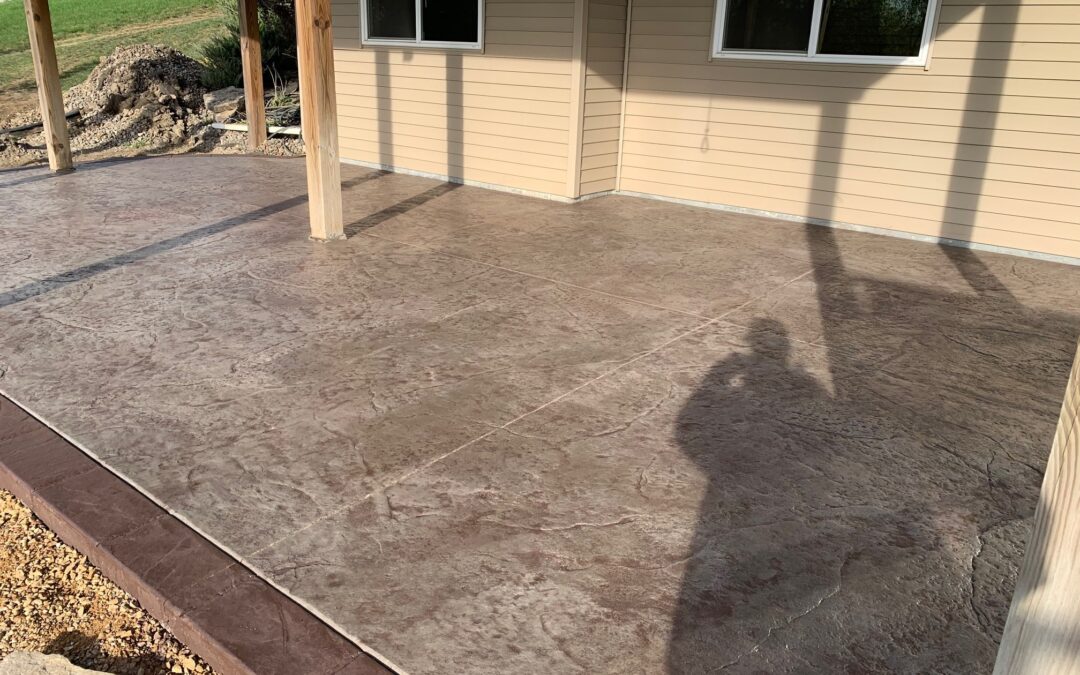Stamped concrete projects are the epitome of creativity and practicality, bringing the elegance of natural materials to your outdoor spaces. Whether you’re envisioning a new patio or revamping your driveway, this blog post will take you on a unique journey into the world of stamped concrete. Along the way, we’ll explore common challenges, present valuable tips and tricks, and help you navigate the complexities of this art form.
Stamped Concrete: Unveiling the Artistry
Stamped concrete is a technique that involves imprinting patterns and textures onto freshly poured concrete. This method allows you to replicate the beauty of various materials while enjoying the benefits of concrete’s durability.
Major Problem #1: Inadequate Stamping Technique
Avoidance Tip: To achieve impeccable results, invest time in perfecting your stamping technique. Start by collaborating with experienced professionals or practice extensively before tackling a major project. Begin stamping from the center and work your way out to prevent air entrapment.
Major Problem #2: Neglecting the Planning Stage
Avoidance Tip: Comprehensive planning and design are paramount. Delve deep into considerations like color, pattern, and texture. Take time to sketch your vision or consult with a professional designer to refine your ideas.
Major Problem #3: Flawed Concrete Mix and Placement
Avoidance Tip: Opt for a high-quality concrete mix that suits your project’s specific requirements. Ensure proper consistency and meticulous placement and consolidation practices. Avoid overworking the concrete, as this can result in surface imperfections.
Tips and Tricks for Stamped Concrete Success
- Pattern Play: Explore a variety of stamp patterns to find the one that complements your project’s aesthetics. Consider the overall landscape and architectural style to make an informed choice.
- Color Coordination: Select integral color or surface-applied coloring options that align with your vision. Experiment with small sections or utilize color hardeners to achieve your desired hue.
- Sample Showdown: Create sample boards to experiment with different color and pattern combinations. This helps you visualize the final outcome and make informed decisions.
- Sealing Strategy: Protect your stamped concrete from UV rays, stains, and wear by applying a high-quality sealer. Regular resealing is essential for long-term preservation.
- Texture Techniques: Incorporate texture mats and skins to enhance the authenticity of your project. These tools can replicate the textures of stone, brick, or wood, adding to the overall appeal.
- Consistency Counts: Maintain consistent stamping depth and pressure to ensure even textures and patterns. Continuously check for uniformity throughout the process.
- Cleanliness Matters: Keep your tools clean during stamping to prevent unwanted marks or debris from affecting the final finish.
- Timing Tips: Adhere to recommended timing for coloring and sealing. Refer to manufacturer guidelines for drying periods and consider weather conditions.
- Edge Excellence: Pay attention to edge detailing for a polished look. Use hand tools to achieve clean borders and edges.
- Maintenance Mastery: Like any outdoor surface, stamped concrete requires regular maintenance. Clear debris, address stains promptly, and stick to a resealing schedule to extend its lifespan.
Stamped concrete projects invite you to embark on a journey of creativity and craftsmanship. While they present their own set of challenges, armed with an understanding of potential issues and the tips and tricks presented in this article, you’re ready to undertake your stamped concrete project with confidence. Precision, meticulous planning, and unwavering attention to detail will be your guiding principles as you transform your vision into a tangible masterpiece. Whether it’s an elegant walkway or a charming patio, stamped concrete can bring your imagination to life. Enjoy your artistic journey!

